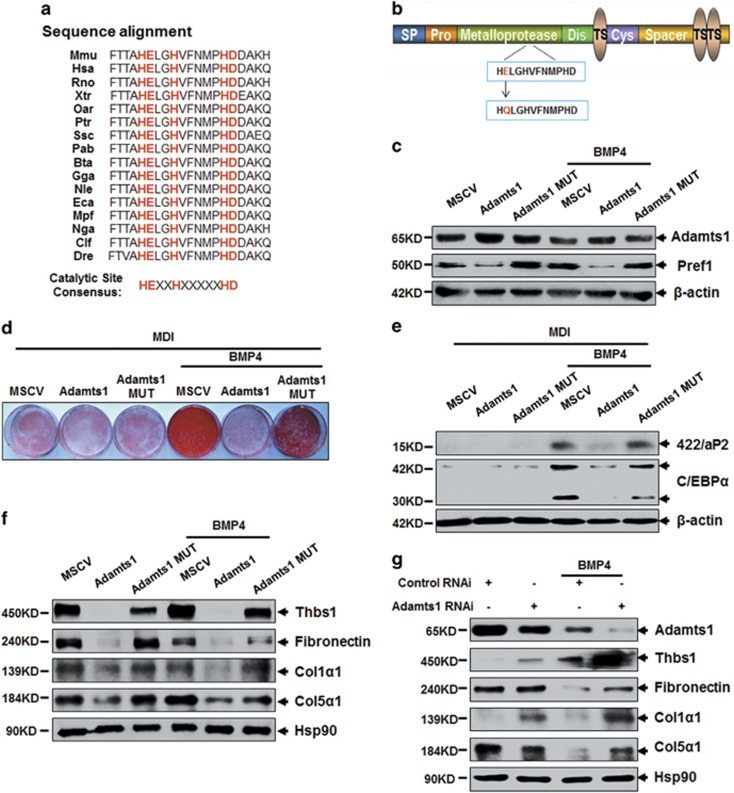Figure 3.
Adamts1 enzymatically remodels the ECM during adipocyte lineage commitment. (a) Sequence alignment comparison of the residue in the Adamts1 metalloproteinase catalytic domain across various species. Mmu (house mouse), Hsa (human), Rno (Norway rat), Xtr (tropical clawed frog), Oar (sheep), Ptr (chimpanzee), Ssc (Pig), Pab (Sumatran orangutan), Bta (cattle), Gga (chicken), Nle (northern white-cheeked gibbon), Eca (horse), Mpf (domestic ferret), Nga (Upper Galilee mountains blind mole rat), Clf (dog), and Dre (zebrafish). (b) A point mutation, in which the essential Glu (E) residue was converted to Gln (Q), was conducted in the zinc ion binding region of the Adamts1 metalloproteinase catalytic domain. (c) Adamts1 and Pref1 expression. C3H10T1/2 cells were treated without or with BMP4 (20 ng/ml) until they reached postconfluence. Western blots were probed with antibodies to Adamts1 or Pref1, with β-actin used as a loading control. (d and e) After reaching postconfluence, cell differentiation was induced (MDI). The effects of the Adamts1 catalytic domain mutation on adipocyte lineage commitment and subsequent differentiation was assessed at day 7 by Oil Red O staining and 422/aP2 and C/EBPα protein expression. (f and g) Western blots of postconfluent cell lysates were probed with the indicated antibodies, with Hsp90 used as a loading control

